
This is an update of something that I posted here two weeks ago, so if it looks familiar, there’s a good reason for that.
I’m reposting it because the event that I was/am describing below—the presumed lost video footage, I mean—has been located. When Cinefamily in Los Angeles recently hosted Jodi Wille’s mega-amazing weekend-long celebration of the Unarius Academy of Science’s er… visionary cable access programs, Jello Biafra made it down from San Francisco and he brought with him DVDs containing over two hours of footage sourced from VHS copies made of just the interview segments of a video shoot that we had done at the Unarian Brotherhood center in 1992 for a Showtime pilot. (There was plenty of B-roll footage of a sparsely attended parking lot ceremony, shots around the center and an amusing moment where Biafra raided the costume room and got each of the Unarians to put on their outlandish intergalactic clobber. This is still lost. All of the camera originals and several dozen tapes of the Unarius cable access program were stolen. The only copies of anything were the tapes Biafra had.)
The footage, dubs of the camera originals, basically, were lightly edited by Biafra’s friend Erleen Nada, a graphic designer and musician who lives in Los Angeles who also happens to be a big Unarius buff herself. She also digitally blew the picture up to hide the timecode. Although it’s two hours long, it is, for the most part, highly entertaining. It’s not a documentary per se, but as a document of the several hours that an extremely quick-witted punk rock legend spent in the company of a goofy SoCal UFO cult over twenty years ago, you can’t really beat it.
Here’s what Erleen sent me in an email today:
My favorite part of this whole thing is watching him trying to hold back the laughter after every question, and his slight glances at the camera as if to say “Did you get a load of that question I just asked?” Haha.
I’ve probably watched the video about 50 times now, and his expressions still make me laugh every time.
He has such a great way of asking potentially offensive questions, in a non-offensive way, and it’s complemented by the Unarians easygoing attitude about the whole thing. They were really good sports, laughing along with everything that Jello asked, they had a beautiful sense of humility about the whole thing that makes them seem that much more awesome.
I had gotten about as far as making a snarky twenty minute rough cut that incorporated a lot of footage from the Unarius TV shows, soundtrack music from Kramer’s three album set The Guilt Trip, and a voice-over narration that Biafra recorded about six weeks after we shot this in El Cajon. That’s lost and will never be found—all the tapes were stolen from the trunk of a car parked in the Playboy building in Beverly Hills. I’m sure that guy was disappointed!—but it might be that this is an even better way to watch this material. Seeing this for the first time in 22 years there were chunks of it that I could still recall from memory having edited the rough cut myself and hearing it so many times.
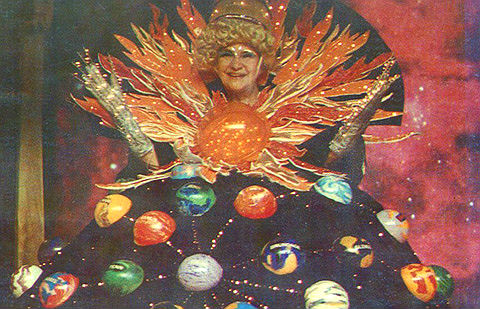
The original article, slightly edited for clarity:
At some point in the fall of 1992 Jello Biafra and I travelled to El Cajon, California with a small camera crew to shoot a short documentary about the Unarius Academy of Science for a Showtime pilot I was directing. The Unarius Academy of Science is a colorful (and quite harmless, no hint of a Heaven’s Gate vibe) UFO cult with their own cable access show, and was at that time housed across the street from both a center for recovering drug addicts/methadone clinic and a sleazy plasma center where you could sell your blood for cash. A Foster’s Freeze was a block or two away. There wasn’t much of anything else going on there. Just a bunch of empty parking lots and an occasional unoccupied building, some threadbare thrift stores and a funeral home. Not to say it was a ghost town, but minus the Unarians, and the junkies, in this part of town, there seemed to be almost no one else around.
To a certain extent, that might be the reason that people joined the cult in the first place: because there is next to nothing to do in El Cajon which isn’t related to gang activities, drug dealing, burglaries, car theft and crime in general. El Cajon’s crime rate is three times the national average. There are very few legitimate jobs for the people who live there, even at the best of times. Maybe some of the town’s residents looking for a little solace from a cruel universe that dealt them the shitty hand of ending up in El Cajon, might be an explanation for the goofy cult’s local appeal.
But then again, maybe nothing can adequately explain it. If you think of the Unarians as characters straight out of a Daniel Clowes comic, it might make a little more sense?

The Unarius Academy of Science was formed by Ernest and Ruth Norman, a couple of dotty New Agers, in the mid-1950s. Unarius is an acronym which stands for UNiversal ARticulate Interdimensional Understanding of Science. The story I heard was that Norman was a traveling psychic medium who put grieving WWII widows in touch with their dead husbands and Ruth was one of his clients. One of his wealthier clients, whose dead husband had left her a restaurant chain or so the story went…
The two met and were married within weeks. Soon Ernest would start self-publishing channeled books and they began having public meetings in Glendale, CA, ultimately publishing over 100 books and garnering several hundred followers. After Ernest’s death in 1971, Ruth Norman moved Unarius to the San Diego suburb of El Cajon, where she also bought up several parcels of now valuable real estate so that a landing strip could be built for the “Space Brothers” of whom Archangel Uriel (as Ruth Norman now called herself) was their emissary on Earth.
The Unarian cosmology predicted that 33 planets would simultaneously send ambassadors in spacecraft that would lock together and form a futuristic city. Uriel taught that beings outside of our direct experience and comprehension exist—she was one of them!—and that one day the Space Brothers will help us silly humans evolve, turn deserts into vegetable fields, stop wars and improve our architecture.
In the late 1970s, “The Arrival,” an elaborate, seemingly high budget film about the Space Brothers showing up in the year 2001 was produced by the group, allegedly with the help of someone who worked for George Lucas doing special effects on the Star Wars films. Creatively fulfilled by this experience, by the early 80s, certain members of the cult began to take an interest in making a cable access television program promoting the group’s beliefs: “Everything is energy.” “You, as a form of indestructible energy, possess a soul that has recorded data from past lives.” “All happenings to you currently have their origins in past lives and past actions.” “Negative acts must be compensated for by positive acts.” And best of all, Asians are Martians and vice versa (Unarians are not racists, this is seen as a good thing, i.e. proof that the aliens have been here for millennia!). The “star” of these programs, naturally was Uriel/Ruth Norman, who took to wearing clothing that would make Liberace blush, often made with Christmas tree lights that needed to be plugged in, thereby awkwardly limiting her mobility!
Some of the shows would just be Uriel talking to her followers and others would be like super low budget “psychodramas”—think Kuchar Brothers, early John Waters, Andy Milligan, etc.
These “psychodramas” were unfuckingbelievable, featuring full outer space costumes, zany make-up and and batshit crazy scenarios. For instance, Uriel might decide that a certain Unarian had been a murderous space captain or an evil sea serpent in a past life. So the group would do these semi-improvised and somewhat elaborate plays, that were designed to “drastically relive” these past lives, so that the Unarian follower would be freed from their karma (more or less). In the one with the sea serpent, they literally videotaped it next to a swimming pool and several people got into a crappy aquatic dragon suit fashioned from floating pool furniture and inner tubes and swam around as the rest of them held a trial and passed judgement on the “creature.” A lot of their psychodramas had a “trial by jury” aspect to them. Holy shit were they tweaked. These programs made it as far as New York’s cable access weirdo home, Channel J.
The morning we got there and before Biafra arrived, we shot their Interplanetary Confederation Day, where far fewer than 33 Unarians marched around in a circle with far fewer than 33 banners representing the (hilariously named) 33 planets who were supposed to supply all 33,000 of the Space Brothers who would arrive here in 2001. A tin spaceship contained 33 doves who were supposed to spill out into the sky at the ceremony’s climax, but they didn’t figure on it being as hot as it was on the day and most of the birds could barely dribble out of the thing. Some probably fried inside as the fully-costumed Unarians marched around their parking lot to the amusement of the folks, like myself, who were there to gawk at them in amazement. Spectacular it wasn’t, but you had to admire their commitment in the face of mainly disinterest, secondarily people driving by and shouting insulting things at them the whole time and that it was boiling hot that day and they were all in their layered interplanetary garb.
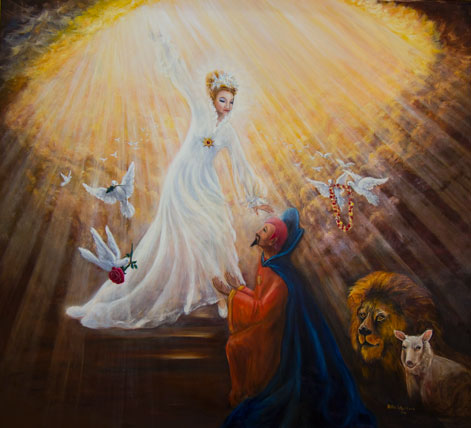
The meaning of this painting gets explained in the video…
Biafra and I never did get to meet the then 93-year-old Ruth Norman herself, her health didn’t permit it, but he did speak to her on camera via a speakerphone as seen in the video. Frankly, I’m just amazed that twenty years after Ruth Norman’s death that the cult still exists. But they do. And even with their leader long gone, her prophecies that didn’t even remotely come close to passing and the sheer pointlessness of the whole thing, the Unarians persist, although the ones who we met 22 years ago are a bit longer in the tooth now (aren’t we all?) What’s weird is that they never grew out of their quirky belief systems even after the Space Brothers failed to arrive—the WHOLE THING that their belief system hinged on—in 2001. Like Jesus on Easter Sunday, Uriel herself was supposed to return then, too. She didn’t even send them a text!
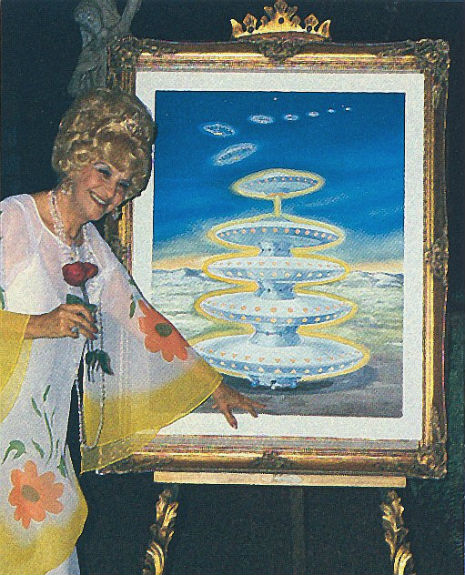
Here’s the trailer for the recent Cinefamily event. If you aren’t familiar with Unarius, this is a good two minute crash course before you watch the Biafra footage…
After the jump, Erleen Nada’s Unarius-inspired “Psychedelic Spaceship” video






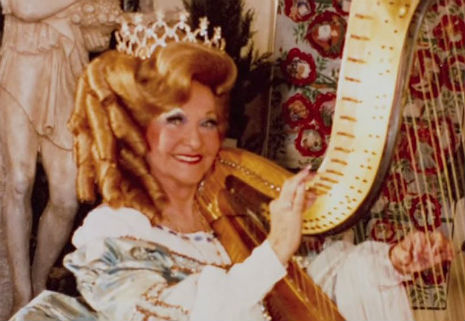


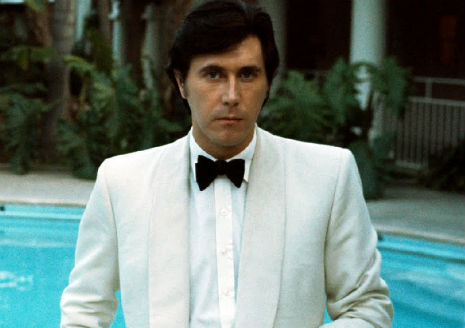

+-+LP+RECORD-418333.jpg)














